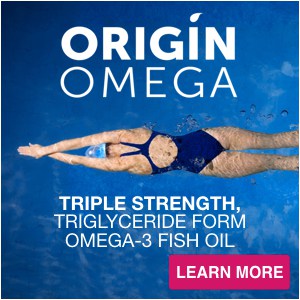Hopefully you have been following along with our series on the history of agriculture, but unfortunately we have come to the end.
[If you have not here are the links to the first three: [Part I, Part II, and Part III]
We have covered how humans have transitioned from hunter-gatherers, to an agrarian lifestyle, to an industrialized society, all the way to one which values food “products” over real food. Each step has progressively led mankind further and further out of his/her natural food cycle and into an entirely new way of existence. However, we use that term “progressive” very loosely insomuch as, it is hard to define these changes as true “progress.” While life has certainly become “easier,” it does not necessarily always mean “better.” That being said, while Pandora’s box has been opened and there is no way to truly go back to the way things were, it is our goal to highlight the steps you can take right now – today, to achieve better health.
Every time humanity has “advanced” the state of agriculture, health has systematically deteriorated. Transitioning from hunting and gathering to a focus on agriculture resulted in a diet centered around foods that are less than optimal due to increased gut permeability, inflammation and naturally occurring micronutrient depleters, as well as decreased overall micronutrient intake and bioavailability. The introductions of synthetic fertilizers and pesticides to the food supply further depleted the soil of micronutrients and added in new toxic chemicals which have placed an even greater burden onto our already taxed bodies. Modern advances with the production of GMOs and other food “products” has led us even deeper down the rabbit hole. Today, the average American eats a diet that is calorie rich-micronutrient poor, full of everyday micronutrient depleters and other toxins.
So what is a concerned individual to do?
Step One: Switch to Rich
We have laid out the general blueprint of our simple 3-step plan in Naked Calories and an actual roadmap of how to find the healthiest, most micronutrient packed food in Rich Food, Poor Food. The key to succeeding in reversing this trend is to focus on our first step – “switch to Rich Food” and becoming a nutrivore. A nutrivore is someone who actively searches for the freshest, healthiest, most micronutrient-Rich Foods available. While most foods you will see in your local grocery store are now heavily processed products or what we call Poor Food choices, as a nutrivore it is your goal to find sources of fresh, local, responsibly grown foods.
Oftentimes this means actually getting out and meeting your local farmer. Maybe you are lucky and have your very own Joel Salatin (who has formed the template for a sustainable, self-sufficient method of agriculture) in your area. But even if you don’t, we have literally mapped out your average shopping trip with our Grocery Purchasing System (GPS) in Rich Food, Poor Food, making it easy for you to find healthy, micronutrient-Rich Foods for you and your family from dairy through to desserts, in your local grocery store.
Step One: Drive Down Depletion
Our second step is to drive down micronutrient depletion. While the advancements of agriculture have resulted in a food supply that is not as micronutrient rich as it once was, this does not mean that you should add onto this with everyday micronutrient depleters. Various anti-nutrients in foods and toxins, as previously discussed, as well as prescription drugs and habits such as smoking, excessive coffee and alcohol consumption can all lead to further depletion. Now, your drug protocol needs to be discussed with your physician before discontinuing anything, but the others are all areas where you may have the ability to drive down the depletion at least a little.
Step Three: Learn the ABCs
The final step is to supplement with a quality multivitamin to help achieve micronutrient sufficiency. Our work during the Calton Project led us to develop theMicronutrient Sufficiency Hypothesis of Health, which states that, “If a condition or disease can be directly linked to a micronutrient deficiency, then it can be prevented and/or reversed through sustained sufficiency of the deficient micronutrient(s).” Unfortunately, the changes over the last 10,000 years have led to a situation whereby it really doesn’t matter whether you follow a low-carbohydrate, a low-fat, a plant-based, a Mediterranean, a Paleo, a Primal or even the medical establishment’s favorite DASH diet, unless you are eating on average 27,575 calories a day, you will be partially micronutrient deficient. As such, a properly formulated multivitamin, that follows our ABCs of Optimal Supplementation Guidelines, such as Nutreince, is the essential final step in reversing the trend.
While the advent of agriculture, the industrialization of this process and the subsequent development of genetically engineered foods has stacked the deck against us, following the 3-steps of the nutrivore lifestyle will put your micronutrient knowledge into practice, allowing you to achieve micronutrient sufficiency and ultimately lead you down a path to live your optimal life.
To begin your journey we urge you to take our free micronutrient sufficiency evaluation. It is the very same quiz we give to our private clients, and you can take it absolutely free. It will just take you a few minutes, and when your finished we will give you your personal micronutrient sufficiency score which will give you a sneak peek as to where you currently fall on the micronutrient sufficiency/deficiency spectrum. As you implement our 3-step plan to micronutrient sufficiency you can come back as often as you like to see how your score has improved!











